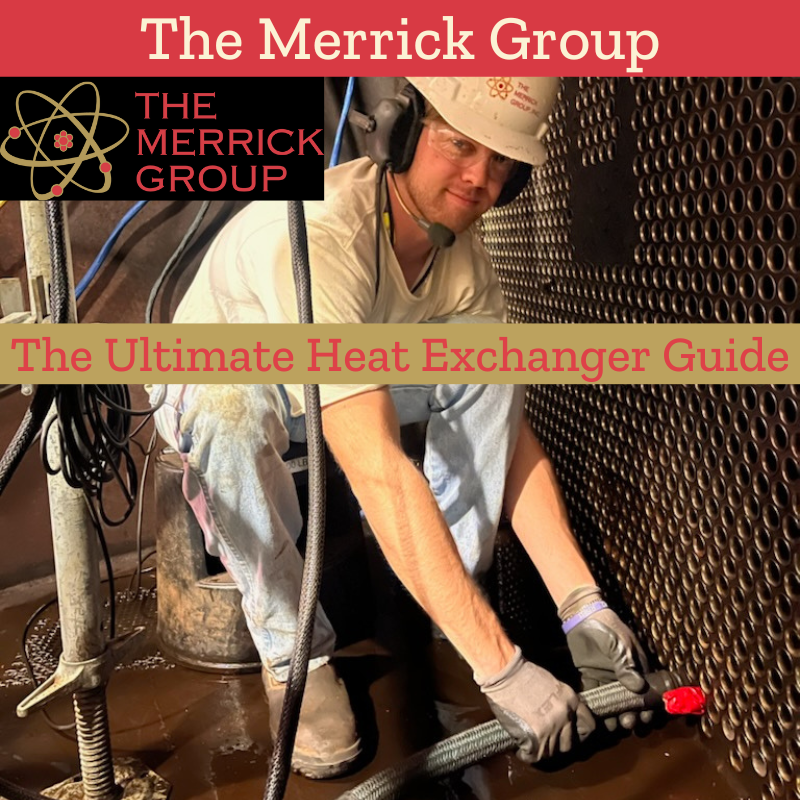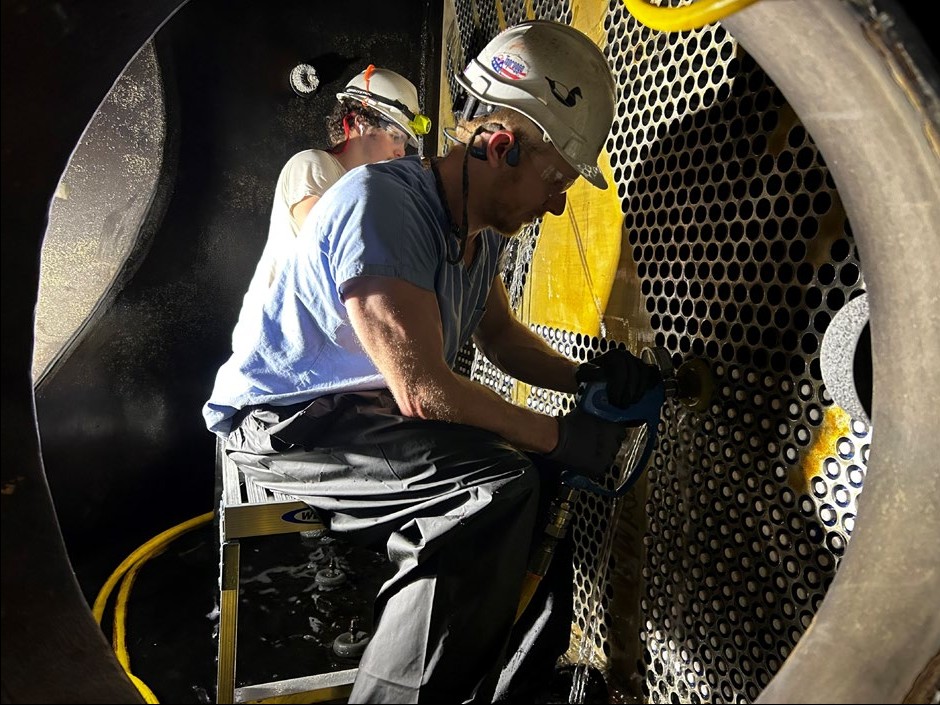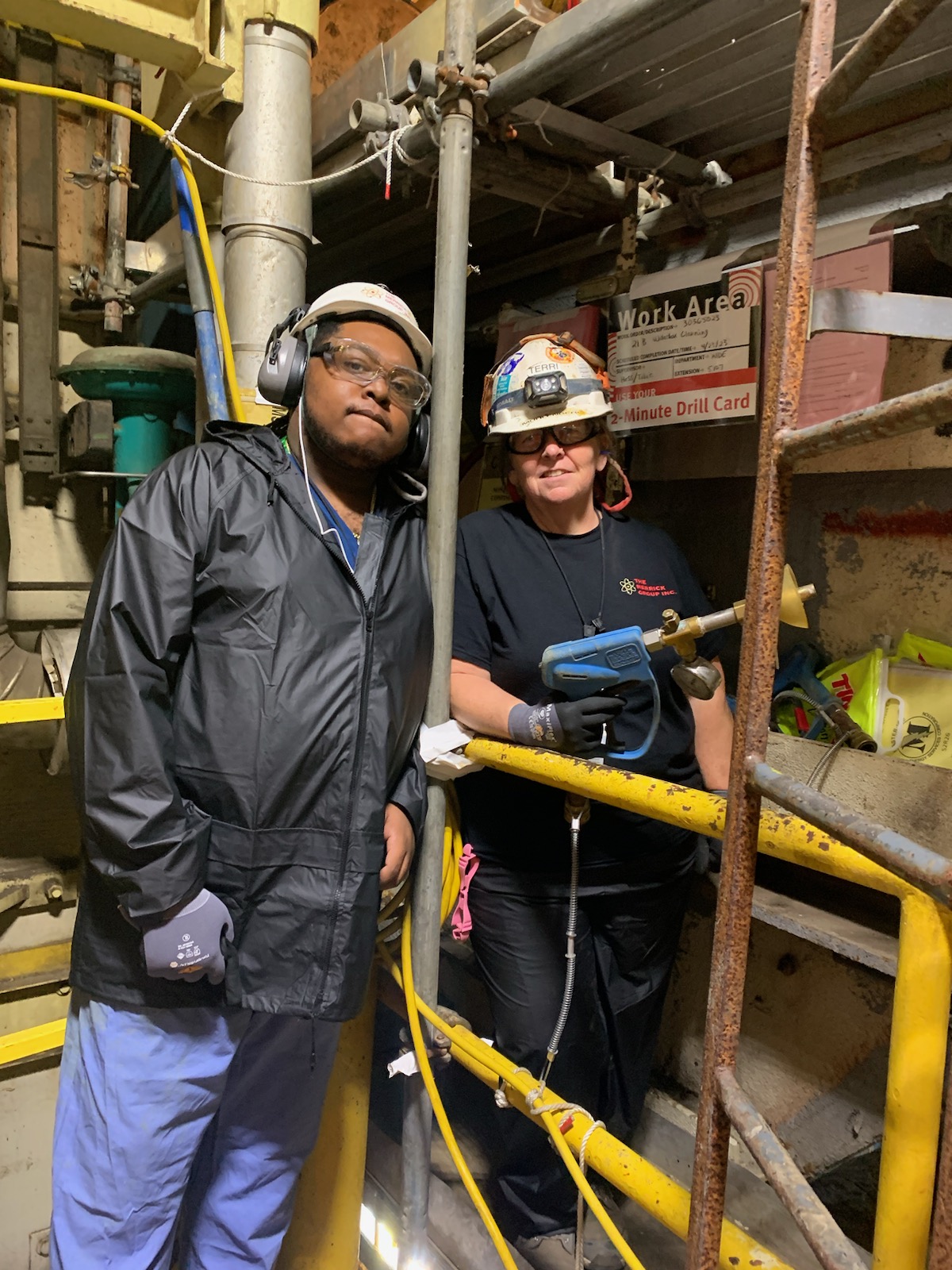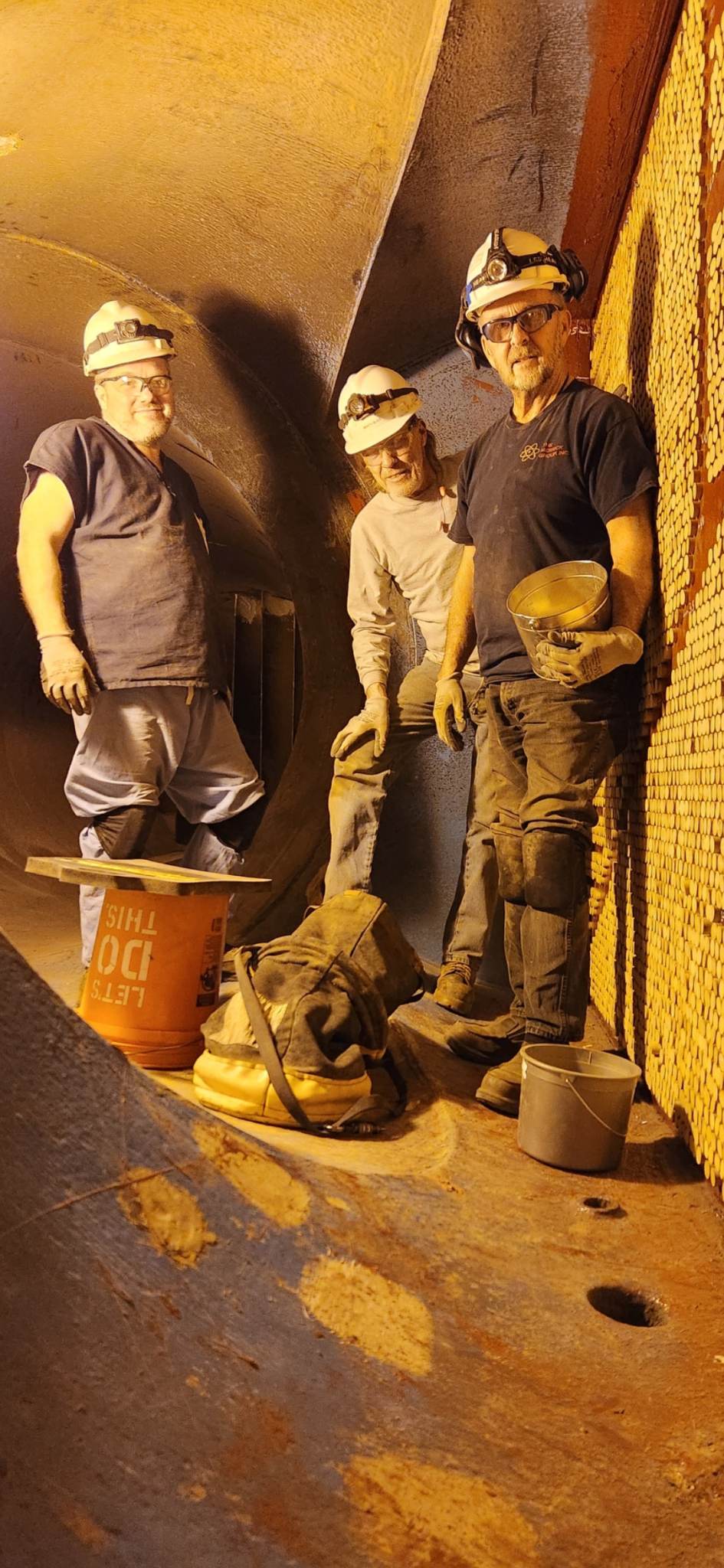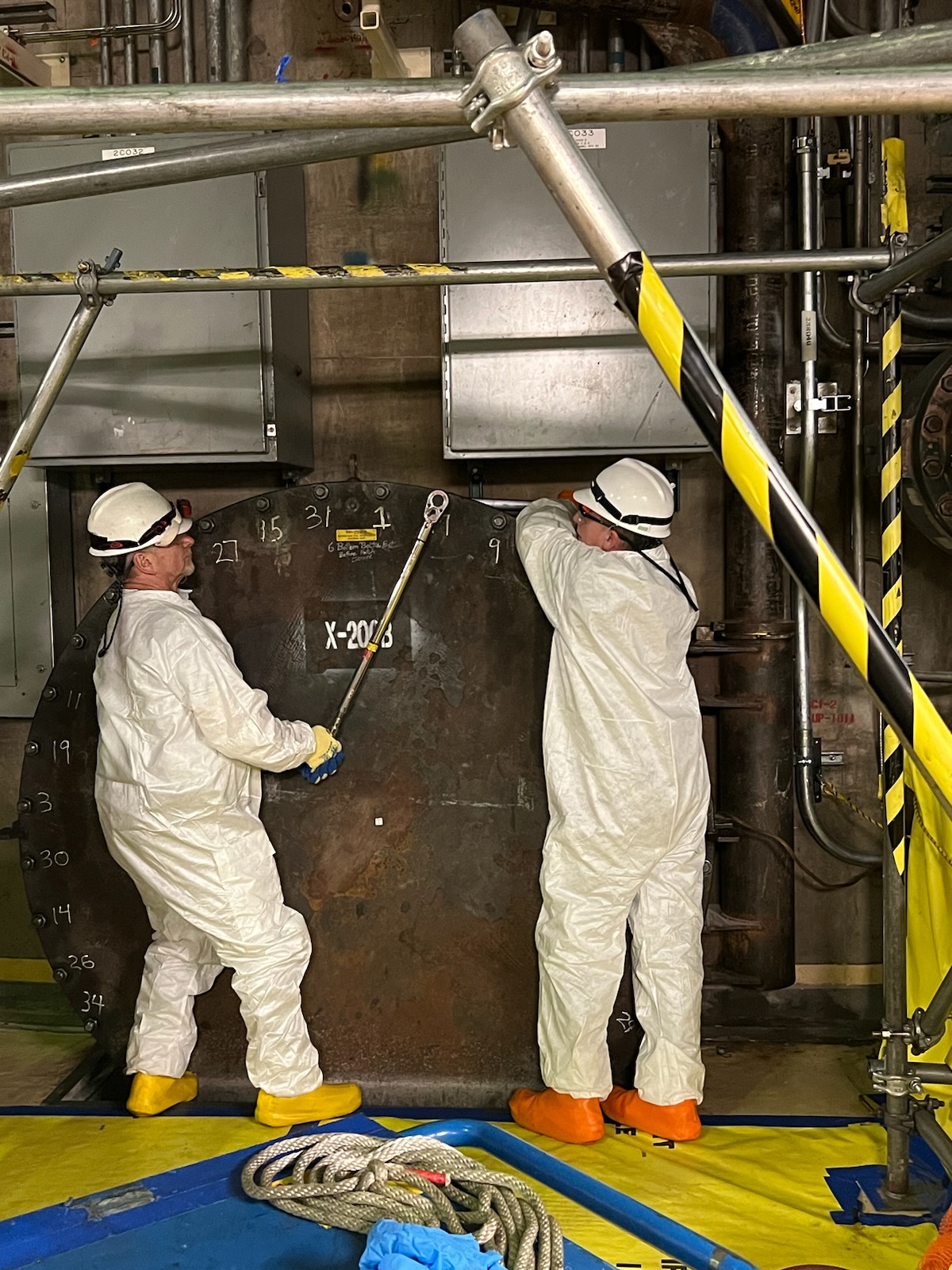Heat exchangers play a vital role in various industrial systems by facilitating the transfer of heat between two fluids, or between a fluid and a gas or vapor, such as steam. They are widely used in power plants, chemical plants, refineries, HVAC systems, and many other applications.
The primary purpose of a heat exchanger is to efficiently transfer heat from one fluid to another. The two fluids involved in the heat transfer process are typically separated by a solid barrier or a series of tubes. This barrier prevents the mixing of the fluids while allowing heat to pass through.
Heat exchangers are designed to optimize heat transfer by maximizing the surface area available for contact between the two fluids. This is achieved through various configurations such as shell-and-tube, plate-and-frame, or finned tube designs. The design choice depends on factors like the temperature and pressure requirements, fluid properties, and overall system constraints.
Maintaining heat exchangers is crucial for their safe and efficient operation. Over time, deposits, fouling, and scaling can accumulate on the heat transfer surfaces, reducing the heat transfer efficiency and increasing pressure drop. Regular cleaning is necessary to remove these deposits and maintain optimal performance.
There are several effective industrial cleaning methods including mechanical cleaning, chemical cleaning, and high-pressure water jetting. The selection of the cleaning method depends on the type of fouling, material compatibility, and the specific requirements of the heat exchanger.
In addition to cleaning, routine inspection and maintenance are important. This includes checking for leaks, corrosion, and other degradation, as well as ensuring proper fluid flow, and overall structural integrity.
Proper maintenance of heat exchangers is crucial not only for efficient heat transfer but also for safety. Heat exchanger failures can result in severe consequences such as fires, explosions, or equipment damage. Therefore, adhering to recommended maintenance practices and scheduling regular inspections is essential to ensure their safe and reliable operation.
Schedule Heat Exchanger Services
The Importance of Heat Exchanger Cleaning and Maintenance
Heat exchangers are crucial components in a wide range of industrial systems, playing a vital role in heat management. They enable the transfer of heat from one fluid to another, employing separate fluid circuits and a barrier to prevent mixing. By facilitating heat transfer, heat exchangers help maintain desired temperature and pressure levels within these systems.
Efficient heat transfer is achieved by maximizing thermal conductivity between the two fluids while minimizing pressure drop and ensuring high overall efficiency. Proper maintenance of heat exchangers is of utmost importance due to the potential risks associated with their failure, such as fire hazards and explosions. Therefore, effective industrial equipment cleaning and maintenance procedures are essential to ensure their optimal and reliable functionality.
To ensure the efficient and safe operation of industrial and commercial systems, it is crucial to prioritize heat exchanger cleaning and maintenance. Here are the key reasons why these services are of utmost importance:
- Enhanced Efficiency: Dirty or inadequately maintained heat exchangers experience reduced heat transfer efficiency, resulting in higher energy consumption and increased costs. Regular cleaning and maintenance can restore and improve efficiency, leading to lower energy usage and cost savings.
- Extended Lifespan: Accumulated dirt, debris, corrosion, and other forms of damage can shorten the lifespan of a heat exchanger. By implementing regular cleaning and maintenance practices, potential damage can be prevented or minimized, thereby prolonging the equipment’s lifespan and reducing the need for costly replacements.
- Improved Safety: Malfunctioning or clogged heat exchangers can create safety hazards, such as overheating or leakage of hazardous substances. Through regular cleaning and maintenance, these issues can be mitigated, ensuring the safe operation of the heat exchanger and minimizing risks to personnel and the surrounding environment.
- Regulatory Compliance: Many industries have specific regulations and standards in place that mandate regular cleaning and maintenance of heat exchangers. Adhering to these regulations is not only essential for safety but also helps to avoid penalties and other legal consequences.
- Optimal Performance: Clean and well-maintained heat exchangers operate at their peak performance, resulting in improved system performance and reliable operation. By scheduling regular cleaning and maintenance, downtime can be minimized, and the need for costly emergency repairs can be reduced.
By recognizing the significance of heat exchanger cleaning and maintenance, industrial and commercial systems can reap the benefits of enhanced efficiency, prolonged equipment lifespan, improved safety, compliance with regulations, and optimal performance.
Contact us for Heat Exchanger Cleaning
Types of Heat Exchanger Cleaning
There are different methods available for cleaning heat exchangers, and the choice of cleaning process depends on factors such as tube configuration, level and type of fouling, and cost considerations. Heat exchanger cleaning is typically performed offline, and the three main types of cleaning methods are mechanical, chemical, and high-pressure water cleaning.
Chemical Cleaning
Chemical solutions are commonly used for heat exchanger cleaning and have proven effective in removing a wide range of deposit types. However, chemical cleaning has certain drawbacks, including the need for proper disposal of chemicals, potential environmental hazards, and the requirement for additional mechanical cleaning to ensure optimal results. The Merrick Group experts will review if chemical cleaning services are right for you.
Mechanical Cleaning
Mechanical cleaning involves using tools that are selected based on the type of deposit to be removed. Molded plastic cleaners are effective for light silt, while brushes can be used for both microbial deposits and silt. Brushes can be adapted to clean tubes with various surface enhancements, such as fins, spirals, metal inserts, or epoxy coatings. Metal cleaners are designed for harder deposits and come in different designs to match the deposit and tube diameter. If you’re not sure which industrial cleaning service your equipment needs, trust the experienced team at The Merrick Group to make a recommendation.
High-Pressure Water Cleaning
High-pressure water cleaning has become increasingly popular for heat exchanger cleaning due to its effectiveness. It can efficiently remove mineral deposits, scale, biological matter, and other debris. High-pressure water systems also facilitate easy collection of the removed deposits, allowing for better tracking of buildup levels over time and establishing a more regulated inspection and cleaning cycle.
Other cleaning systems and processes, such as combination air and water systems or compressed air systems, may also be available, each with their own specific practices and effectiveness depending on the tube and deposit characteristics. Regardless of the method used, it is crucial to rely on a highly trained heat exchanger cleaning service crew.
When seeking assistance with cleaning components and industrial equipment, you can trust the expertise of The Merrick Group, an experienced industrial cleaning company. For any questions or requirements, feel free to email their staff for guidance.
Email our staff today with your questions or needs.
Steps of Heat Exchanger Maintenance
Heat exchanger cleaning is a complex, multi-stage process that involves many steps. Further, proper cleaning must be carried out by a certified technician so that there is the certainty that all steps are performed fully and that all regulations are followed. A few of the things that a heat exchange technician will perform include:
- Multiple inspections: From as-found inspections that document the conditions of the heat exchanger when the technician arrives, to post wipe-down and after-job inspections, the heat exchanger technician will carefully inspect – and document – the state of the heat exchanger throughout the entire heat exchanger maintenance process. This helps managers and maintenance personnel to understand the condition of their equipment, to better predict when maintenance will be necessary, and to develop an overall picture of the health of their heat exchange systems.
- Complete tube cleaning and coating: The exchanger tubes are essential for all heat exchangers, and these tubes must remain clean and properly coated to ensure that the exchange of heat happens efficiently. Thus, heat exchanger cleaning technicians will perform thorough cleaning and re-coating of all exchanger tubes, utilizing only industry-certified techniques and materials.
- Cover removal, cleaning, inspection, replacement, and tube plugging: The tube covers must be clean to ensure that there are no breaks in containment seals. Thus, heat exchange maintenance professionals will perform a thorough review of all aspects of the covers, cleaning and repairing or replacing them as necessary.
Speak with a Heat Exchanger Maintenance Technician
When Should I Clean a Heat Exchanger?
Heat exchanger inspection should be performed at least once a year, with more frequent inspections recommended for those in dirty or corrosive environments. The frequency of heat exchanger cleaning and maintenance depends on several factors, including:
- Type of Heat Exchanger: Different types of heat exchangers have different cleaning and maintenance requirements. For example, shell and tube heat exchangers may require more frequent cleaning than plate heat exchangers.
- Operating Conditions: The operating conditions of the heat exchanger, such as the temperature, pressure, and fluid flow rate, can impact the rate of dirt and debris buildup and the need for cleaning.
- Environmental Conditions: The environment in which the heat exchanger is operating, such as the presence of corrosive or abrasive substances, can impact the need for cleaning and maintenance.
- Industry Regulations: Some industries have regulations and standards that dictate the frequency of heat exchanger cleaning and maintenance.
Consult with The Merrick Group to see if you should schedule heat exchanger maintenance or cleaning.
Heat Exchanger Safety
Heat exchanger safety is important in ensuring its operation does not injure people or other systems. There are all safety tips to look for when determining your heat exchanger is working as intended:
- Irrelevant Temperature: Extreme temperature conditions can affect heat exchangers both within and outside of the system. While some fluids, like refrigerants, are kept very cold, process fluids are frequently heated to high temperatures. Depending on the environment and location of the facility, certain heat exchangers that are outdoors are subject to temperature extremes.
- Change of Phases: To avoid the harmful phase change, it is important to maintain the temperature within acceptable ranges. There are many heat exchangers that are not built with phase change in mind, but, there are some heat exchangers that are made compatible for phase change. For example, the pressure will rise quickly if the temperature increases to the point at which cooling water boils and turns into steam. If the system is not built to withstand these huge pressures, the effects might be dangerous.
- Change in Pressure: Pressure change can detect high-pressure excursions, but flow meters on the heat exchanger’s input and output sides can also detect pressure. It is important to check the pressure drop in the heat exchanger under normal conditions because if it rises, the flow may be restricted, and it will not be safe for the workers.
- Corrosion and Fouling: The surfaces may corrode when the process fluids come in contact and resulting in rust buildup or scaling that may lower the tubes’ diameter and hinder flow. Additionally, low-velocity regions of the heat exchanger may experience a buildup of dirt and pollutants in the process fluid. For example, a small bit of sand and leaves, or even a tiny amount of resin that is more solid and less viscous, might accumulate in the water that is being pumped from a nearby lake.
Learn more about Heat Exchanger Maintenance
How To Choose a Heat Exchange Service Company?
When selecting heat exchanger servicing company, you will want to trust a highly experienced staff, also well-versed in the use of the best tools and techniques. Upgrades and modern technology should be relied upon to help save you money due to requiring less outage time. An intimate understanding of corrosion, fouling agents, and coatings is also highly recommended. This ensures that the best methods and safety measures will be employed to work hand in hand with heat exchanger design understanding. The end result will be maximized equipment lifecycles and fluid flow along with minimized costs and operational risks.
A heat exchanger service company such as The Merrick Group can help determine if your system requires maintenance. Learn about The Merrick Group Advantage, and see why our reliability, efficiency, dependable technology and safety qualities can assist with your heat exchanger cleaning and maintenance services, anywhere in the world!


